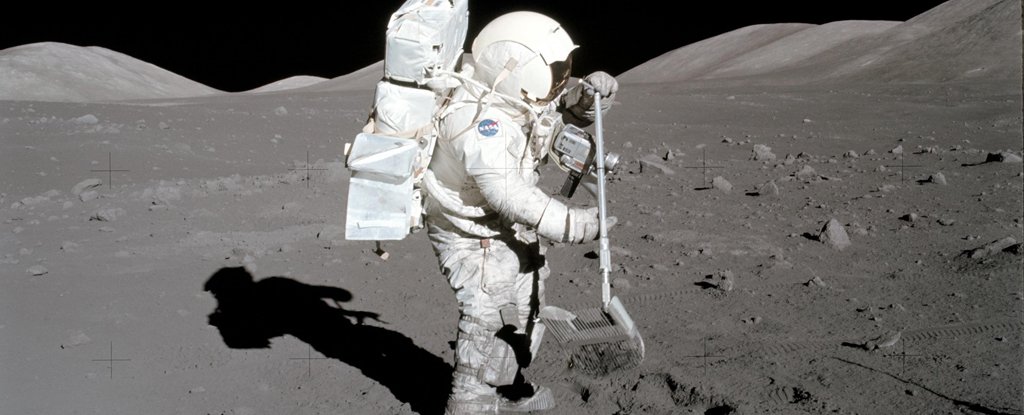
Half a century ago, NASA's Apollo program sent a handful of people to walk around on the Moon, take a few pics, say something witty, play golf, and bring back some souvenirs.
Not all of those souvenirs got handed out for analysis, but NASA had good reasons to keep a few on ice. Now nine lucky research teams will get their chance to examine Moon rocks fresh from the can!
Later this year, NASA will unlock the three remaining samples of lunar material that have been preserved under cold and airtight conditions since being collected by Apollo missions 15, 16, and 17.
One of the samples, collected in 1972 by Apollo 17 astronauts Harrison Schmitt and Gene Cernan, consists of roughly 800 grams (about 1.8 pounds) of surface material still wrapped in the metal tube used to pull it from the ground.
Other Moon bits have been kept in deep freeze, or preserved in helium since they were brought back some 50 years ago.
Holding onto such rare and precious specimens for so long might seem like a tease, but it makes perfect sense if supply looks to be limited for the foreseeable future.
"Returned samples are an investment in the future," says Lori Glaze, acting director of NASA's Planetary Science Division in Washington, DC.
"These samples were deliberately saved so we can take advantage of today's more advanced and sophisticated technology to answer questions we didn't know we needed to ask."
We've learned a lot about our planet's companion in the years since Apollo 17 bid farewell for the last time, gathering evidence on its history to piece together a story on its origins.
New discoveries often spark new questions, and today's researchers are keen to learn what they can from Moon rocks that are yet to be affected by Earth's atmosphere.
One team lead by Mount Holyoke College in the US is keen to examine the helium-preserved sample for signs of tiny glass beads that form during volcanic eruptions.
These quickly-cooled droplets of molten lunar guts are tiny time-capsules representing an age when the Moon wasn't as chill as it is now.
Another team hopes to address whether cold storage was actually the best choice for keeping lunar samples in pristine condition.
By comparing previously studied Apollo 17 material with the stored specimen, researchers from the University of Arizona will be able to tell how the method of curation affected hydrogen-bearing minerals, such as water.
Several other teams will also look at the role of water in lunar geology, examining how this vital substance is locked up in minerals or how they behave in an environment showered in radiation.
Given we're now beginning to understand just how much water is up there, knowing how it interacts with the Moon's chemistry could prove important when we eventually return.
The odds of seeing a new generation of lunar missions in coming decades are looking pretty good.
Even if partisan politics continues to put the brakes on efforts to pick up where Apollo 17 left off, the rise of commercial space technology and space programs emerging in nations outside of the US provide fertile new grounds for hands-on Moon research.
"By studying these precious lunar samples for the first time, a new generation of scientists will help advance our understanding of our lunar neighbour and prepare for the next era of exploration of the Moon and beyond," says Thomas Zurbuchen from NASA's Science Mission Directorate.
No matter what role NASA will play in future research, its contributions to the past will still be the key to success for tomorrow's efforts. We can't wait to hear what these teams will discover.
Bagikan Berita Ini















0 Response to "NASA Is About to Open a Priceless Cache of Untouched Moon Rocks For The First Time - ScienceAlert"
Post a Comment